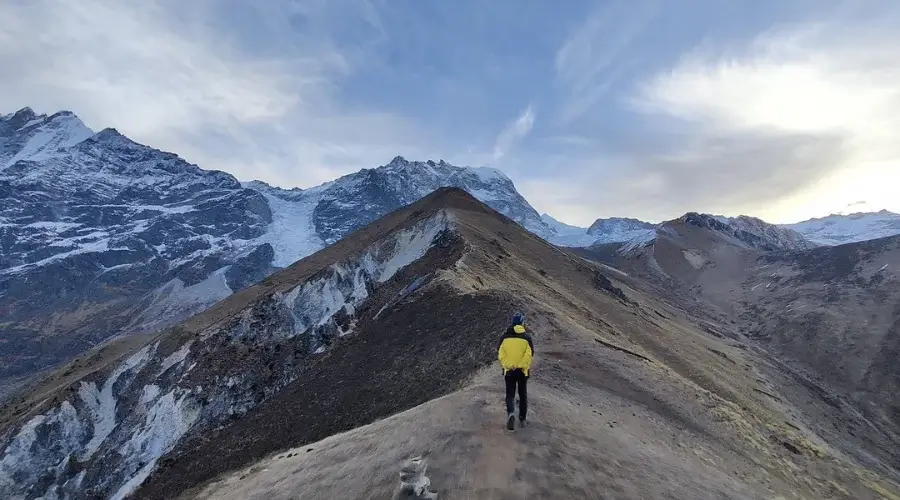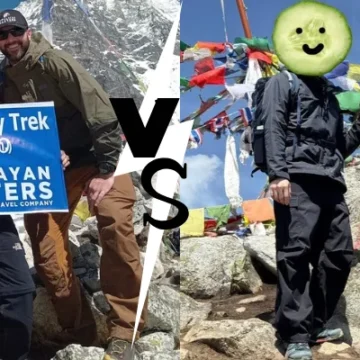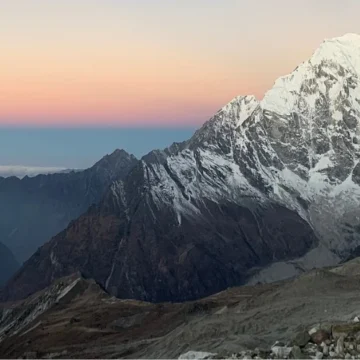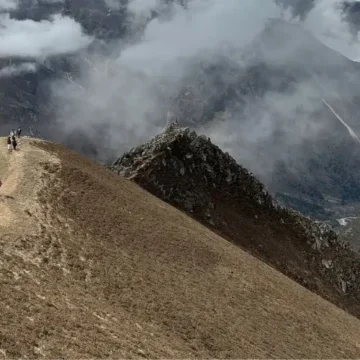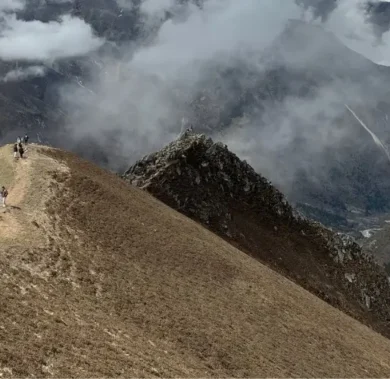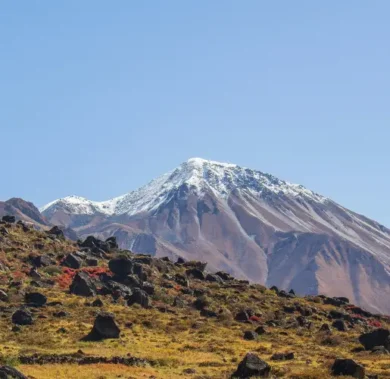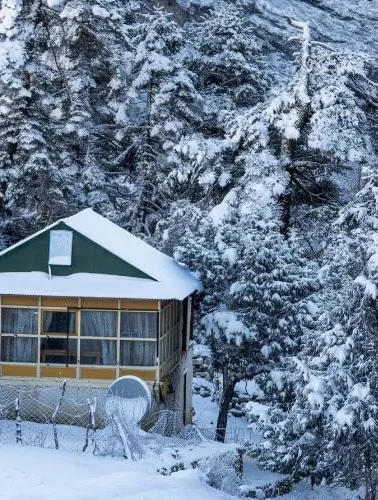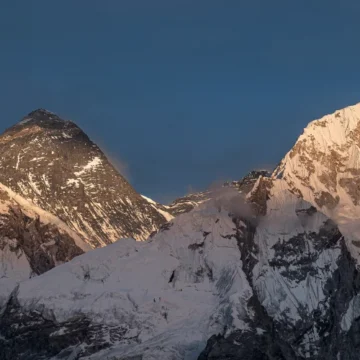
The difficulty of Yala Peak climb
Table of Contents
Nepal is now a popular destination for the Yala Peak Climb. That is the most sought-after peak in the freaking time right now. Amongst them is Yala Peak, which is considered one of the easiest trek peaks in Nepal. Many people attempt for a Yala summit. In this article we will learn about the difficulty of Yala Peak.
Yala Peak, a 5,732-meter-high mountain, is good for trekking. Also a good chance for peak climbing to those adventurous types in the Langtang Himalayan range of Nepal. Not only is this non-technical route an interesting adventure itself, but it also has beautiful views. Such as Shishapangma, the sixth-highest peak in the world. Moreover, Langtang Valley, with peaks, forms a notable scenario. The climb begins from Kyanjin Gompa, a village with Buddhist monasteries and factories producing butter and cheese from yaks. This area was a destination on its own for most tourists.
While progressing to Yala Peak, the grade will steadily increase through the beautiful landscape. As you climb higher, the majestic scenery of snow-capped peaks and the surrounding wild terrain of the Langtang Valley will unfold. Climbing of Yala Peak is the best activity choice for both newbies and experienced climbers alike. Hence, that is the activity for anyone who would love a surprise Himalayan expedition.
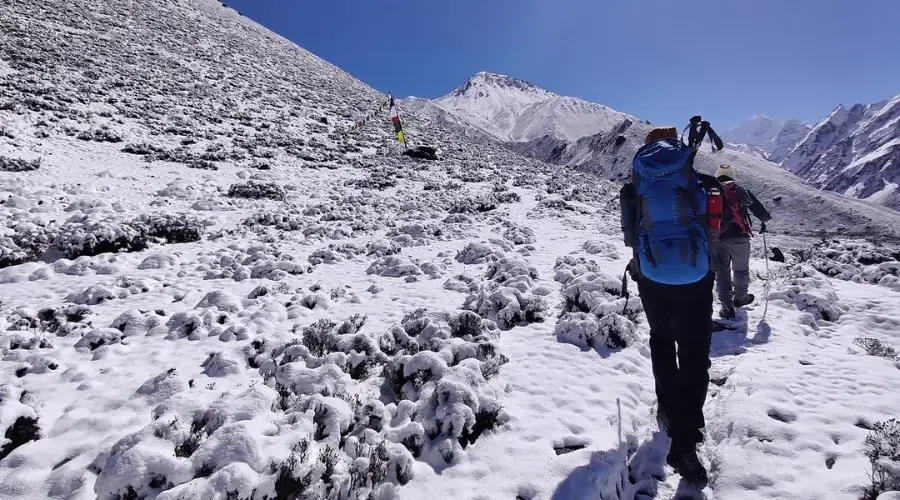
Difficulty of Yala Peak in Nepal
Yala Peak, situated in the Langtang region of Nepal. It is among the many treks and climbs that are available, and which offer a moderate level of difficulty. This hike is however not as technical as some of the higher mountains in this region. Which require a good fitness level and some basic mountaineering skills as well. The ascent process involves proceeding through rocky landscapes and annoying snow troughs that might be slippery and deep at certain times.
The air getting thinner at that altitude is one of the main factors that add to the complexity of Yala Peak. At 5,732 meters, the air becomes really thin. It increases the risk of altitude sickness by making it less easy to breathe. Climbers have to acclimatize and should slow down and rest periodically when climbing in order to adapt to the altitude level correctly.
Besides, the weather in the Himalayas is unpredictable and twinkles every moment. Such a coincidence is certainly a threat to the climbers. Especially in the season of ascension when the weather is cold and it is more advisable to expect snowfall. Hikers should handle the climbing-down procedure and, as a precautionary measure, should carry appropriate gear. Such as warm clothing and sturdy shoes, while trekking.
However, one cannot say that Yala Peak difficulty is a very demanding mountain, and as such. It does not require advanced mountaineering skills, such as preparation, fitness, and respect towards nature. The knowledge about the risks and threats to climbers and trekkers, and one should be ready mentally and physically for hiking.
What is the success rate of Yala Peak?
The highest rate of success for the Yala Peak you’ll find in comparison to climbing other peaks in Nepal. The climbing rate success to the 95% Yala peak is reputed to be among the best. In terms of safety, the results from the test trial with a rate of 100% are satisfactory. The other part about this is that the fact that climbers who try their luck feel lucky enough to reach the top of the mountain also makes this summit successful. First, there are several variables that indicate why this product is so successful.
In the beginning, Yala Peak is viewed as a non-technical climb, that is, an ascent does not require mountaineering professional skills and advanced equipment. One of the key aspects of the auto-belay device is its ability to allow for safer belaying. It makes it much easier to operate so that climbers who don’t have much experience can also find enjoyment in this activity.
Also, the climb up to the summit is rather simple, with well-laid trails and clear markings. It presents a clear picture and therefore makes the reading of topographical maps and navigation easier, hence reducing the possibility of getting lost. One thing you need to do is find the best time for Yala Peak Climb.
As a result, the ascent will not be as challenging as the ones for some of the other peaks in the area. For instance, while Yala Peak is still a high mountain, it is lower than the height of Everest or Annapurna. This means that climbers are less likely to get acute mountain sickness (AMS), whose symptoms often hinder a person from making it to the summit. A continuation of such factors is the underlying reason for good results while climbing Yala Peak, which, in turn, makes this a famous climb among those who are interested in a short hike.
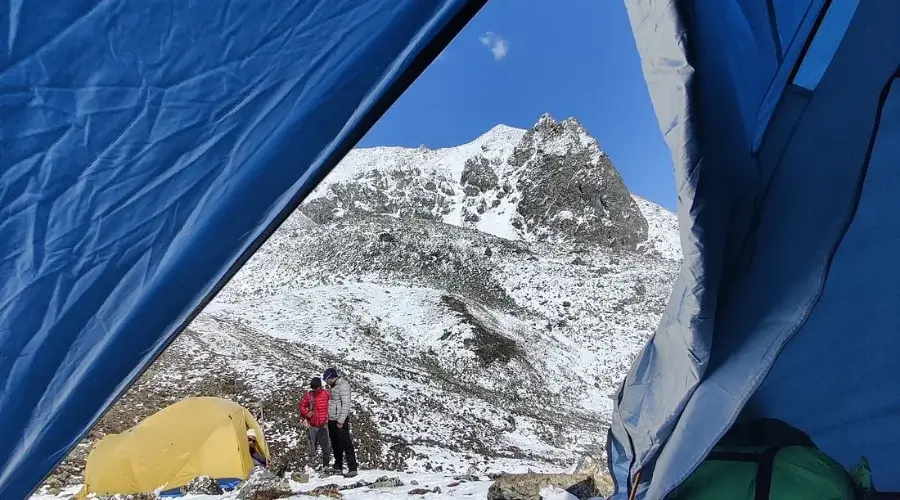
The difficulty of Yala peak from Kathmandu
The distance between Kathmandu to Syabrubesi is around 122 kilometers. After the drive of around 8-9 hours from Kathmandu you will reach Syabrubesi, a starting point for the Langtang Valley and Yala Peak trek. The road condition from Kathmandu to Syabrubesi is somewhere black topped, bumpy and off-road too.
Talking about the difficulty of Yala Peak from Kathmandu, it is not that difficult. As we have already mentioned, Yala Peak is listed as a Grade F climbing trek in Nepal. You will not have to worry about its difficulty. But you might have to be concerned about the altitude sickness in the Yala peak climb. As they ascend towards Yala Peak, trekkers gradually gain altitude, which can lead to increased physical exertion and altitude-related challenges. The final climb to the summit involves navigating steep and potentially icy slopes. It often requires the use of basic mountaineering equipment. While the distance is not extensive, the terrain, altitude. The physical demands of the trek contribute to its moderate difficulty level, requiring trekkers to be well-prepared and in good physical condition.
Is Yala peak difficult?
Yala Peak is considered to be moderately difficult. While it is not as technically difficult as some of the higher peaks in the Himalayas. It still requires a good level of physical fitness and some basic mountaineering skills. The trek to the summit concerns navigating through varied terrain, including rocky paths and potentially icy slopes. As well as gaining altitude gradually, which can pose challenges related to altitude sickness. However, with proper preparation and guidance, many climbers find Yala Peak to be a manageable and rewarding ascent.
Is Yala Peak difficult for beginners?
Yala Peak can present a significant challenge for beginners due to its high altitude and the physical demands of the ascent. While it is considered a non-technical climb. Meaning it does not require advanced mountaineering skills, it still requires a good level of fitness, endurance, and acclimatization to the altitude. Beginners may find the trekking and climbing aspects challenging, particularly navigating rocky terrain, steep slopes, and potentially icy conditions. Additionally, the risk of altitude sickness at Yala Peak’s elevation of 5,732 meters (18,806 feet) is a concern for inexperienced climbers. Therefore, while Yala Peak may be achievable for beginners. With proper preparation, guidance, and training, it is advisable for them to gain some prior trekking and high-altitude experience before attempting the ascent.
How long should you stay at Yala Peak?
The period of your trip at Yala Peak Nepal and base camp is basically specified by your trekking plan and climbing itinerary. Normally, the hikers and climbers take 10-14 days on average for the expedition of Yala Peak. So, they will have a lot of time to adapt, trek the base camp, summit the peak and finally descend safely.
Trekkers who want to summit Yala Peak usually need to stay in base camp for at least 1 to 2 days and undergo thorough acclimatization before further ascent. This is an imperative period for acclimatization because it lowers the chance of developing elevation sickness. Moreover, it sets aside time for revising climbing techniques, examining the gear, and finalizing the plan for the summit with the guides and fellow climbers.
During the acclimatization period, the climbers set their summit goal on the base camp. Which will be met one day after, depending on weather conditions and group fitness level. After achieving the summit, which was their ultimate goal. Climbers return to the base camp for some rest and then trekked down the lower elevations. In the end, the sequence of events will result in the successful ascent to the peak of Yala and its base camp. Where climbers will appreciate the beauty of the Himalayas and meet their goals.

Where to sleep on Yala Peak?
There are various tea houses along the Yala Peak Trek Route. Your trek begins after the flight to Kathmandu. In Kathmandu, you will be at a hotel that fits your budget and preferences. After you arrive in the remote areas of the Yala Peak region, you will stay at basic teahouses that provide basic services.
At the Langtang Valley region, you will have warm and cozy rooms to stay in after an exhausting day of trekking. Up to Kyanjin Gompa, these kinds of teahouses will provide meals, lunch, breakfast, hot showers, Wi-Fi, charging services and more. However, not all of the teahouses might have Wi-Fi services in the area. Because the Langtang area is remote, there may not be a WIFI facility in every area you stay in.
As you move up to the Yala Peak area, you need to be accommodated in a tent at the Yala Peak Base Camp. After finding the right space for the tent, we will accommodate there. You will need to have proper insulated wear to keep yourself warm. You will also require a sleeping bag for minus-degree temperatures. Himalayan Masters provides a complimentary sleeping bag and will also help you rent essential kits and equipment for the trek.
Want to know more?
Speak to an Expert





Sandip Dhungana
Nepal 🇳🇵
Whatsapp: +977-9823636377

